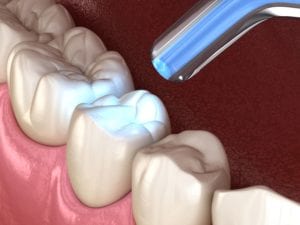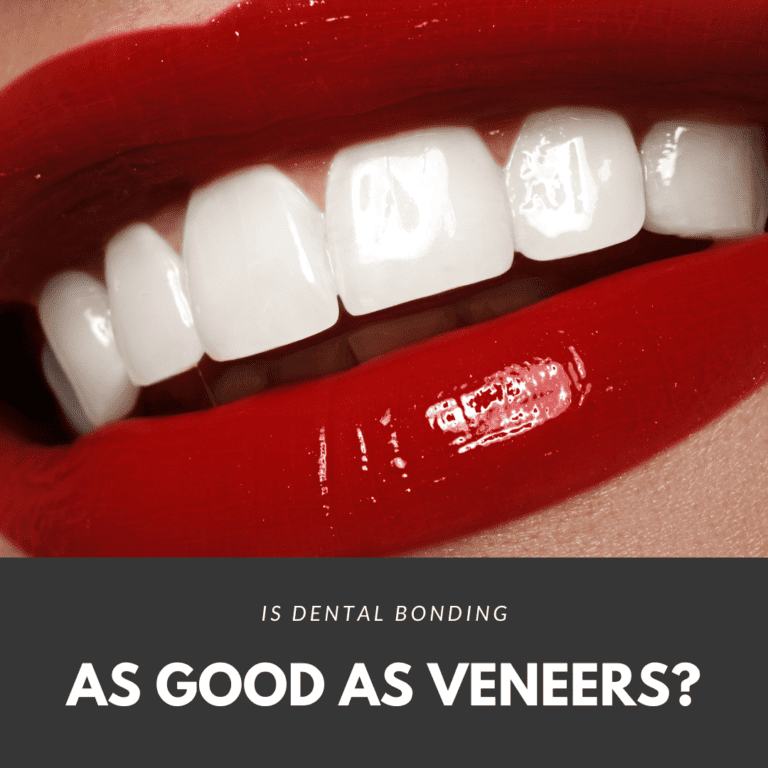If you are looking for a cosmetic dental treatment that addresses a multitude of cosmetic concerns with a single treatment, then chances are that you’ve heard about dental bonding and veneers. Both treatments are commonly used because they can correct the size, shape, color, alignment, and spacing of imperfect teeth. In some cases, they can also be used to restore minor damage such as chips and cracks.
However although both treatments offer similar results, they accomplish this in different ways. Like its name suggests, dental bonding “bonds” composite resin directly to the tooth enamel to improve the appearance of the teeth. Veneers, on the other hand, are thin shells made from porcelain that are cemented to the front side of the teeth in order to improve their appearance.
Because both treatments offer similar results, but in a different way, many people wonder just how they compare. And since more people have heard of veneers than dental bonding, this usually raises the question: is dental bonding as good as veneers? To answer that question, we must consider the following:
Technique

While both treatments produce similar results, the technique they use to obtain those results is different. As mentioned above, dental bonding uses composite resin bonded to the enamel, while veneers use thin porcelain shells cemented to the front side of the teeth. Composite resin is able to bond directly to the tooth enamel, which means that there is less preparation needed, as well as less modification to the natural tooth. Conversely, the porcelain shells used for veneers must be used in coordination with a cement or adhesive to bond it to the enamel. In order to prevent the veneers from looking bulky, this means that a thin layer of enamel must be removed before the veneers can be placed. These differences in technique also make dental bonding reversible, which veneers are permanent.
Number of Dental Appointments
The differences in technique also means that there is a difference in the number of dental appointments. Since the composite resin used for dental bonding requires minimal preparation and can be hardened in a number of minutes, it usually only takes one dental appointment to complete the procedure. Since veneers require moderate preparation and the use of a dental laboratory, they usually require a minimum of two dental appointments: one to prepare the teeth and take dental impressions, and the second to place the veneers. In some cases, veneers can be placed in a single dental appointment if the dentist has an in-office milling machine since this eliminates the need for a dental laboratory.
Longevity

Dental bonding and veneers use two different types of dental materials and these materials ultimately affect how long the results will last. Assuming proper care, the composite resin used in dental bonding lasts around 5-7 years, while the porcelain used in veneers tends to last 10-15 years. This is because porcelain is stronger than composite resin. Additionally, porcelain is also resistant to stains, while composite resin may eventually stain over time if constantly exposed to highly pigmented foods and beverages.
Cost
One of the main factors people are concerned about is cost. As a general rule, dental bonding is considered to be the affordable option since it has a lower upfront cost. Its lower upfront cost is due to the fact that it does not require a dental lab, can be completed in one dental appointment, and uses composite resin, which is a cheaper dental material than porcelain. Veneers do have a higher upfront cost since they require multiple appointments, fabrication by a dental laboratory, and use porcelain, which is a more expensive dental material. Despite their higher upfront cost, however, veneers may actually save you more money in the long run since they last three times as long as the results from dental bonding. Additionally, dentists with an in-office milling machine may be able to offer more affordable veneers since they do not have to pay the dental laboratory.




